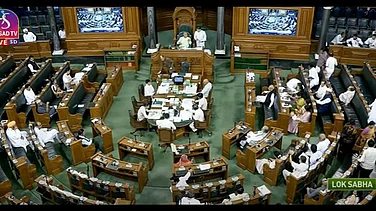India’s merchandise trade data for June 2025 reveals a mixed trend, with exports largely flat but imports continuing to decline, driven by falling gold and crude oil shipments. India's merchandise trade deficit in June slipped to a seven-month low of $35.14bn—down around 9% from May—but the dip concealed a more nuanced trade reality. Notably, even as the exports declined by 0.1% year-on-year, shipments to the US and China bucked the trend. It revealed a strategic shift and emerging pattern in India's global trade map.
US—A Bright Spot Amid Uncertainty
The US-India trade pact, which was expected to be declared last week, is still in limbo. Indian negotiators are back in the US this week to reach an agreement before the 1 August deadline. So far, India has been spared from Trump’s tariff letters. Bloomberg reported the US is working toward an interim trade deal with India that may reduce its proposed tariffs to below 20%, putting the South Asian nation in a favourable position against its peers in the region. Currently, India is subject to a 10% baseline tariff. The Donald Trump-led administration imposed a 26% tariff on Indian goods on April 2.
"Over the past three months, we have observed an increase in export growth to the US and import growth from China, possibly reflective of a mix of frontloading by India-based exporters and China-based exporters rerouting exports through India," said Japan-based global financial services group Nomura in a report.
India’s exports to the US surged by 23.5% in June, climbing to approximately $8.3bn, while imports from the US fell by over 10%.
Tech giants like Apple are also reorienting supply chains. Foxconn shipped 97% of its iPhones to the US from India between March and May total export value hitting $3.2bn. It shows how companies and their contractors are accelerating production in India to stay under the rising US tariff radar, involving chartered flights and customs fast-tracks to meet demand swiftly.
China's Steady Gains
India's export story with China is subtle but also significant. China’s exports to India rose slightly from $11.1bn in May 2025 to $11.2bn in June 2025—a modest month-on-month growth of 0.9%. In contrast, the year-on-year increase is more significant with exports to India in June 2025 being 14.1% higher than in June 2024, according to data released by China Customs last week.
"The sustained growth could be driven by strong Indian demand for electronics, machinery, and intermediate goods used in manufacturing, reflecting the growing interdependence despite geopolitical tensions," said Ajay Srivastava, founder of New Delhi-based trade policy think tank Global Trade Research Initiative (GTRI).
While China reports exports to India at $11.2bn in June 2025, India’s data shows a lower figure of $9.5bn for the same period, GTRI highlighted.

Unseen Export Engine
Amid the decline in traditional exports, electronics shine through. Electronics imports rose by 9.5% to $8.4bn and machinery and computer imports grew 8.5% to $4.4bn. "This suggests that domestic investment in assembly/manufacturing remains healthy," Srivastava added.
Notably, India’s broader electronics output benefits from its Production-Linked Incentive (PLI) schemes and global brands like Samsung, Appl and Google increasing "India‑made" output. India is rapidly establishing itself as a manufacturing base—not just for exports, but as a geopolitical hedge in a complex trade arena between Washington and Beijing.
GTRI analysis shows that India’s export profile is continuously displaying signs of structural transformation. High import-intensity sectors like electronics are gaining ground, while traditional labour-intensive sectors remain flat or in decline.
"In June 2025, electronics exports rose sharply by 47.1% to $2.8bn, while readymade garments (up just 1.23%), leather goods (-0.59%), gems and jewellery (-20.4%), handicrafts (-2.5%), ceramics and glassware (-0.16%), and engineering goods (up only 1.35%) declined or showed little momentum," GRTI noted.
"As global trade becomes more protectionist, India must tread carefully. It should pursue only balanced trade agreements and double down on improving the ease of doing business at home," the think tank suggested.
The data points to a shift away from traditional, low-import intensive sectors toward low domestic value add and high import-intensive assembly—marking a gradual realignment in India's export engine.





























